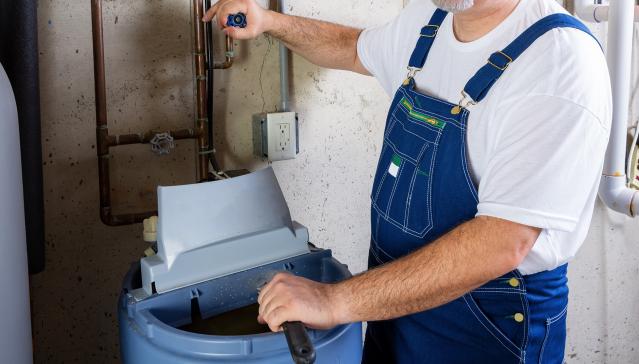Hard water is a typical feature of water in central Texas. It is caused by concentrations of certain elements and compounds like calcium and magnesium carbonates suspended in the water. Removing these elements and compounds on a large scale is prohibitively expensive. Therefore, customers can install water softeners to address this feature.
A water softener is a mechanical unit designed to remove hardness from water. Softened water allows soap to form suds easily. It reduces the buildup of scale in boilers or water heaters and does not leave large mineral deposits on plumbing fixtures, glass shower/tub doors, and cooking utensils. A water softener requires maintenance to ensure the unit is performing properly. We recommend the unit be serviced regularly.
Water softener causing low pressure
If you are experiencing low pressure only inside your home, you will need to check your water softener. Put the softener on bypass and see if the pressure increases. If this increases your pressure, the problem is probably in the water softener. In this instance, the softener will need to be serviced.
Water softener causing water quality concern
- Brown particles that are uniform in size is a potential result of resin from the water softener. Bypass your water softener until repaired and flush all lines in your home to clear particles.
- If the unit is not in use it should be taken out of service, unplugged and by-passed to prevent taste and odor problems.
- Salt used during the softening exchange can be corrosive to the home plumbing system; this includes water heater anodes.
- Due to the increase of sodium in softened water, individuals with sodium-restricted diets should check with their physician to determine what levels of sodium are acceptable in softened drinking/cooking water.
Water softener causing high usage
A water softener timer stuck in the regeneration cycle will dump water down the drain, increasing water usage and operational costs.
